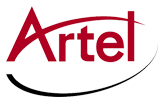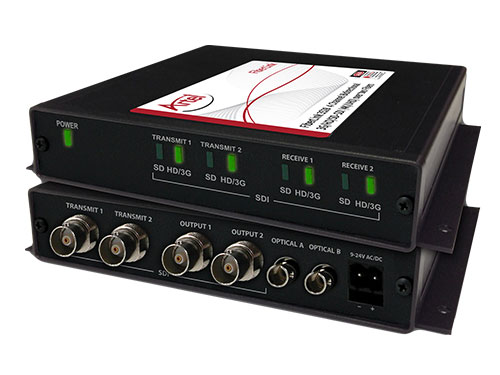Did you know that our FiberLink family of fiber optic transmission products is a quarter-century old? Of course, FiberLink systems have evolved significantly over that time, and the product family has adapted and expanded to support increasingly advanced audio and video technologies, as well as a broader array of applications across different markets.
This blog series will take a closer look at FiberLink — how it has enabled advances in professional video, and how it continues to meet the latest requirements for broadcast or corporate studios, education, stadiums and theaters, airports and transportation hubs, rental and staging, surgical or medical imaging, government and military, and more. But first, a quick look back at FiberLink’s first 25 (or so) years.
A Quick Look Back
The FiberLink product line has a very long history across a broad array of solutions, applications, and markets. While early iterations of FiberLink products were around earlier, it was in 1997 that the family was officially launched. At the time, key applications were security and intelligent transportation, such as controlling road signs to share information about lane closures, construction delays, and so on, as well as more specialized data and video transport solutions for the military.
FiberLink moved into the Pro AV realm with early VGA-over-fiber systems in the late 1990s and early 2000s. (They do still exist today, and we still sell them today!) They became incredibly popular because so many computers relied on VGA, and this was true across military and corporate training centers, and at colleges and universities to connect projectors in large classrooms and lecture halls. With the introduction of DVI-over-fiber systems, FiberLink made its way into the rental and staging market. Hundreds of these systems were packed into cases and taken around the world on tour with various artists.
In the broadcast realm, FiberLink started out in the analog video domain, initially supporting composite video for NTSC and PAL. The family evolved to meet demand for SDI over fiber, and those products really took off with the industry’s transition away from analog and toward digital (SDI) and HD-SDI. Artel enhanced the capabilities of the SDI product line with various audio options, and support for data and control signals (especially useful for PTZ cameras).
Throughout the early 2000s, the Artel team traveled the world to educate people about fiber cables and connectors, and how to terminate and maintain fiber. While education was vital, several other factors combined to boost adoption. First, a “cut and crimp” connector type was released, and this allayed concerns over termination and made fiber a much more appealing alternative to copper.
Increasing need for high-bandwidth media transport likewise drive fiber adoption, as copper simply can’t support transport over longer distances. The inherent security of fiber also made it an attractive solution for government and military facilities seeking to isolate signals between different rooms or buildings. The ability to move camera, communications, and sensor data securely in real time also proved valuable in various military operations.
These same benefits made fiber appealing for medical applications such as imaging, where resistance to EMI and support for uncompressed video made FiberLink an ideal solution for video transport. From these applications, it was a natural jump to distance learning, where video and audio are moved over fiber —uncompressed and in real time — to another room, building, or campus for educational purposes.
The FiberLink Family Today
Today the FiberLink family supports nearly every type of video, audio, and data signal from 4K-12G/3G/HD/SD-SDI to composite video, DVI, and RGBHV. In upcoming blog posts, we’ll dig into the details of specific applications and how FiberLink can offer practical solutions that meet the most demanding requirements. Stay tuned for our next blog post, which will focus on Government applications.

